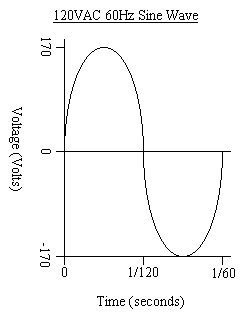
First, you need to get a meter and find the voltage it takes for a full scale deflection, current it takes for a full scale deflection and the internal resistance of the meter. If you do not have one of these measurements, you could use Ohm's law to find the missing measurement (I=E/R; R=E/I; E=I*R). But if you are missing two or more, you will need to find them yourself.
First decide what the range of your voltmeter will be (lets say 0-1 volts). Subtract that voltage by the voltage it takes for a full scale deflection on the meter (1-0.015=0.985). You will need to place a multiplier resistor in series with the meter to create a voltage drop that equals that number (0.985) so that your meter can function up to that voltage. You will then use Ohm's law to find the value of that resistor, by dividing the voltage drop you need by the full scale deflection current of the meter(0.985/0.0001=9850). That number is the value of the multiplier resistor you need to put in series with the meter to get the voltage range you wanted.
If you then add the resistance of the meter to the resistance of the multiplier resistor (9850+150=10000), you can see if the value of the multiplier resistor is correct by then multiplying the total resistance of the meter by the current it takes for the meter to make a full scale deflection (10000*0.0001=1). If the number you get is equal to the range of that setting, the value of the resistor is correct (1=1).
First decide what the range of your ammeter will be (lets say 0-1mA). Subtract that value by the current by the current it takes for a full scale deflection on the meter (0.001-0.0001=0.0009). You will need to place a resistor in shunt with the meter that will carry up to that much current, and send the remaining to the meter. You will then use Ohm's law to find the value of the resistor, by dividing the full scale deflection voltage by the current that resistor will carry (0.015/0.0009=16.6). That number is the value of the resistor you will place in shunt with the meter to get the current range you wanted.
If you don't know what all this means, let me explain. The sine wave is constantly changing voltage and polarity. It goes through cycles of zero, then rising to its peak voltage, falling back towards zero, and rising in voltage again, but in the opposite polarity. 60Hz means it goes through 60 cycles per second (once was called 60cps until 1967). The peak value of the wave is the highest point in the wave, where it is the highest voltage. The AC sine wave is rarely measured by its peak value. 120VAC actually has a peak value of almost 170 volts, and thats what the meter would read if you stuck it in the wall. But because the voltage of the wave is constantly changing, 170VAC(peak value) does not produce the same amount of power in a resistive load as 170VDC. 170VAC(peak value) actually has the same effect as 120VDC. So what the effective value (RMS value) is, is a direct comparison of an alternating current's ability to do work to a direct current's. The effective value of an ac sine wave is equal to the square Root of the Mean value of a current Squared (RMS).
Below is a graph of the sine wave that is 120 volts alternating current at 60 hertz. In one
cycle, the voltage starts at 0 volts after 0 seconds. After 1/240 sec. the voltage rises to its
peak value of 170 volts. At 1/120 sec. the voltage falls back to zero. Then at 1/80 sec.
the voltage rises to 170 volts at the opposite polarity. And the cycle ends at 1/60 sec.
where the voltage falls back to 0.
